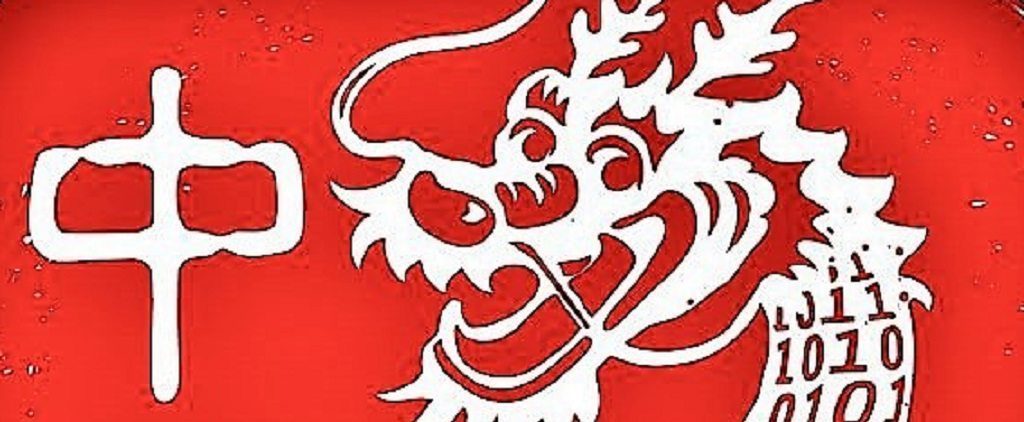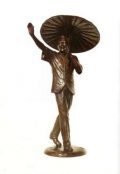[dropcap style=”font-size:100px;color:#992211;”]T[/dropcap]o fully understand the impact of China in the modern world its important to have an idea of how the self styled communist state extricated the free market from democracy. Who will art be made about in the future? The man who made it possible, Lee Kuan Yew. In Trebuchet’s second look at China for its Chimerica series, Natalie Andrews explores Lee Kaun Yew and the art that venerates him.
From looking at various sources regarding globalisation it seems clear that the United States and China are two major forces driving globalisation. There are other major forces such as Russia, India, Europe and rising South American economies which represent significant influence on global affairs, America and China though remain economically and militarily stronger. These states are also despite stark differences in culture, economy and government deeply intertwined in the modern world as a direct result of globalisation. The co-dependant relationship and its hypocritical nature given extensive criticism from both nations of the other seemed to present opportunities for creative interpretations of the concept which attracted me.
It is also from China and America that money flows into the art world in its greatest amounts and therefore exerts huge influence over the world culture of art. This is both an activity of art lovers, museums and individual collectors but as expected the vast amounts of money attached to art works and arts tendency to grow in value make it a perfect area for profit making and investment. Perhaps even more poignant is the governments themselves of China and America engaging in ‘soft power’ strategies to propagate their core values and conquer by co-opting rather than by direct force. Understanding this state of affairs requires a better understanding of how China has become such a force in the contemporary world.
Empire Building in the age of Globalisation
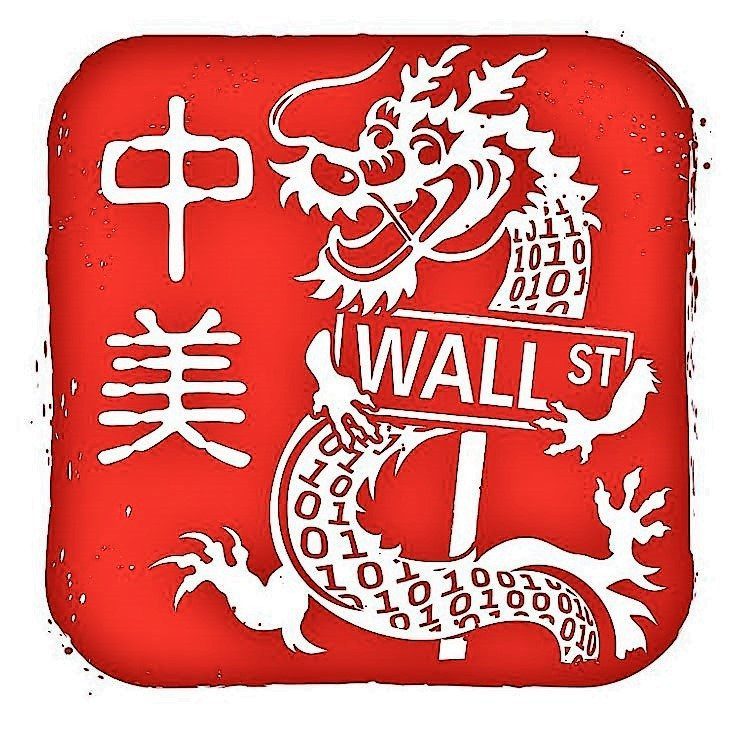
Chimerica Logo
“China is replacing its main economic rivals around the world largely without the use of force. China’s success marks the first case of empire building in the age of globalization,” Behzad Yaghmaian, ‘China: Empire Building in the Age of Globalization’ 2013 The Globalist
Behzad Yaghmaian writing in the globalist offers a clear and concise if worrying history of how China has become America’s main rival economically in the world today and as some would have it the probable inheritor of global power in the future. He locates the Chinese event as being a direct result of American policy, while America embraced globalisation to further its own influence China had opened its ‘economy to the world’
The Americans though have a dual problem, the one emphasised by Yaghmaian is an obsession with balancing the books and a commitment to free market ideals which prevented investment where it would have counted. Meanwhile, China was able to do the exact opposite,
“They poured resources into areas pivotal for building a robust and competitive economy. China became the unintended winner of the limits of the United States’ free market ideology,” Behzad Yaghmaian, ibid
The Triumph of Liberal Democracy?
There is a sense that America and in tow the west in general has held onto the idea that it would be the winner in any soft power culture war, that in effect what Francis Fukuyama claimed as the ‘end of history’ would come true in the 21st century. Western liberal democracy would get some minor foothold everywhere and wherever people experienced Coca Cola and fast food, eventually free votes and democratic elections would follow,
“What we may be witnessing is not just the end of the Cold War, or the passing of a particular period of post-war history, but the end of history as such: that is, the end point of mankind’s ideological evolution and the universalization of Western liberal democracy as the final form of human government.” Francis Fukuyama The End of History and the Last Man 1992
However, this was a short-lived naivety which had many abrupt full stops including the resistance and continuation of radical Islam, the rise of the new far right and of course with the self interest and strategic decision making of the Chinese leadership who were ready to take on the free market without the inconvenient and unstable democracy that for China defines American power,
“China’s decision to open its economy to the world coincided with the U.S. drive for globalization. U.S. and Western corporations opened the economic floodgates to China through direct investment and subcontracting agreements. As Western capitalism globalized, China became the factory of the world,” Behzad Yaghmaian ibid
‘The End of History?
Er,. No’
The Singapore Solution
This problem which has largely gone underreported is the historic separation of the capitalist free market from a democratic power structure. China has an authoritarian even totalitarian government which crushes descent and takes ultimate control over all major economic decisions. This has meant that clear and strategic policy meets no meaningful resistance they are able to ruthlessly manage the capitalist free market,
“But again, China and Singapore and other examples of very successful economies today demonstrate that this, let’s call it ironically eternal marriage between democracy and capitalism, is coming to an end,” Slavoj Zizek – Democracy and Capitalism Are Destined to Split Up (transcript) 2016
Building on Zizek’s insight, writing in the ‘World Finance’ Tom Bailey explores China’s inspiration, Singapore,
“This new model was one in which the state was active, yet the philosophy of the welfare state was spurned. International investment was encouraged and private property respected, while the labour force was disciplined and political dissent punished. Red tape and business regulation was relaxed, while the population was regimented through micromanaging laws,” Tom Bailey ‘How Singapore married dictatorship with a market economy’ 2016 1
This echo’s Zizek’s claim that,
“What we are more and more getting today is a capitalism, which is brutally efficient, but it no longer needs democracy for its functioning,” – Zizek ibid
Singapore went from third,
to ‘first world’ and
China was watching
Baily explains that this successful combination which turned Singapore from a third world to a first world country has involved the curtailing of the civil society and many freedoms of the people. Baily directly quotes Zizek and gives essential details of the strategies employed by the leadership and Lee Kuan Yew (first minister, governing for 30yrs)
“Lee, the man who presided over this transformation, would also quietly go on to be one of the most influential leaders of the 20th century, with many seeing his legacy reaching far into the 21st. In his tenure, he had forged a state that combined both an authoritarian state and free market. ‘To whom will monuments be built a century from now?’ writes Slovenian philosopher Slavoj Zizek in The Financial Times. “Among them, perhaps, will be Lee Kuan Yew. He will be remembered not only as the first prime minister of Singapore, but also as the creator of authoritarian capitalism, an ideology set to shape the next century much as democracy shaped the last.” Tom Bailey ibid

46-year-old Lee Kuan Yew pictured in worldfinance.com
Since his death at 91 in 2015 Lee Kuan Yew has already inspired many commemorative sculptures, from home grown self-made entrepreneurs like Mr Sim (Jack Sim is a business man who made his fortune in sanitation, his hero Lee inspired him to design a bust he then had made into 10 identical sculptures. Keeping two he donated the others to local institutions) Lee also received immortalisation from international artists from Spain and France.
- Lee Kuan Yew by Jack Sim 2015 (Bronze)
- Lee-Kuan-Yew-by-Lim-Leong-Seng-2015
- Lee Kuan Yew by Nacera Kainou (Bronze)
Loved by conservatives and businessmen, educated at Cambridge university Lee was a product of a post-colonial world, he was imbued with a superior education and hard unsentimental nature,
“He was the man human rights lawyers loved to hate, who founded the state that hangs drug-dealers and murderers, fines litterbugs and those who drop chewing-gum, abolished trial by jury, suppresses media dissent, canes offenders — and boasts one of the most successful economies on earth. Lee Kuan Yew, who has died aged 91, made Singapore what Margaret Thatcher wanted to make Britain, had not democracy got in her way,” Max Hastings, Daily Mail 2015
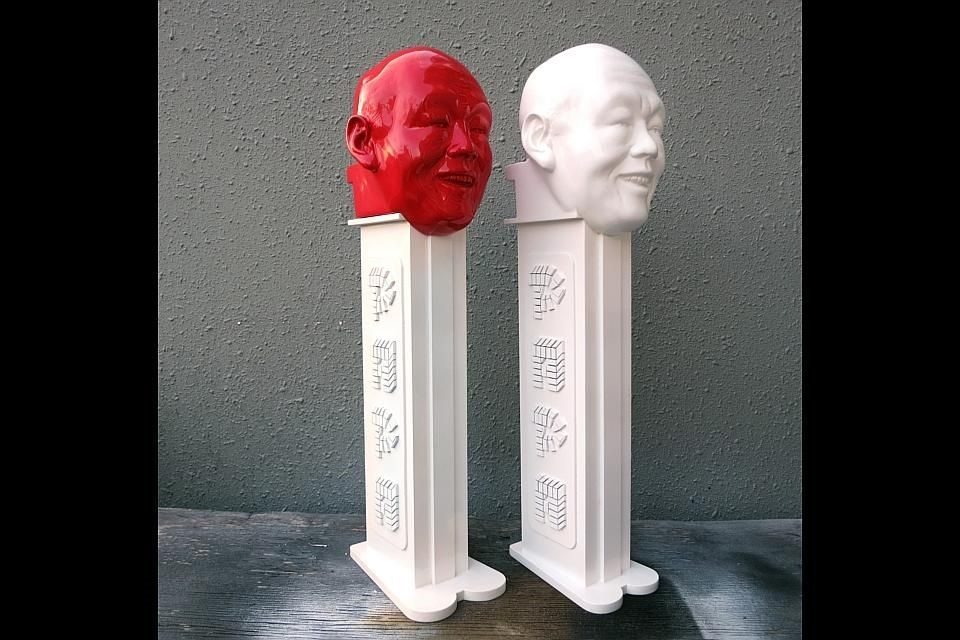
‘Papa’ Lee Kuan Yew/ Pez dispenser by Jeffrey Koh 2015
‘Papa’ Lee
Even the contemporary fine art community has produced sculptures inspired by Lee, ‘Papa’ by Jeffrey Koh an Artist and founder of ‘Flabslab’ a Singaporean toy/art manufacturer may seem at first glance to be a trivialisation of the ‘great’ man we may even see in it a vailed criticism of the unbridled consumerism represented by the pez dispenser pedestal. But if your having that reaction you may be a little too used to Banksy style satirical/ironic juxtapositions there is no vailed criticism here Koh is clear,
“It’s a tribute, but also serves as a reminder, as most of the millennials have no idea what he’s done. We can’t deny the fact that he’s the founding father of modern Singapore…Like it or not, without him, we’d probably be a fishing village.” Jeffrey Koh quoted by Avanti Nim in ‘The Business Time’ 2015,
While that observation may be true to most Singapore residents the dream unsurprisingly has not worked for everyone. There are lots of reports about growing inequality in Singapore compounded by the absolute recoil at any kind of welfare Tom Benner reporting for Aljazeera claims,
“The island’s rich get richer while its poor get poorer, prompting calls for an official poverty line to be set,” Tom Benner, ‘Singapore poverty in the spotlight’ www.aljazeera.com, 2013
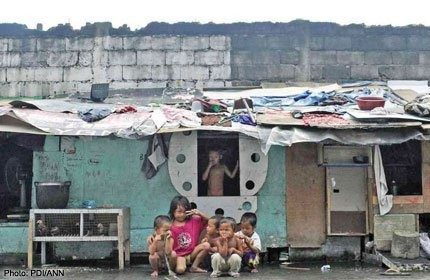
In another article from Asia1 there are calls for data to be gathered since there is little official statistics about poverty in the country. This is an obstacle to reform and as such reflects a popular attitude that go getters shouldn’t have to pay for the poor and disposed. http://www.asiaone.com/singapore/singapore-must-define-poverty-say-experts
For the artist Koh though the priority is clear,
“The idea worked like a charm because the entire Papa series was sold out,” Avanti Nim in ‘The Business Times’ 2015,
Claiming political neutrality while stating he has the upmost respect for Lee Kwan Yew and what he did for Singapore is a little like wanting your cake and eating it but this kind of hypocrisy is not an eastern peculiarity the profiteering and unabashed commercialism (Koh made a small fortune following Yew’s death by selling a range of artworks, ‘prices ranging from S$950 to S$2,200’) is something we’ve had here in the art world for a long time.
The New World Dynamic
This is an odd result of opportunities opened by globalisation and international trade. Odd that a communist totalitarian party should be so successful in promoting the creation of wealth, the Chinese following Lee Kuan Yew’s successful implantation of free market forces have shown themselves to be canny strategic opponents taking advantage of American assumptions and habits. To put it in simplistic terms the idea that liberal democratic ideals are intertwined with the free market is no longer true. The liberal individual with their human rights and ideas of freedom are inconvenient for money and wealth creation, especially when they expect to be able to vote out leaders who might want them to work extra hours for less money or if they expect free health care or education or somewhere to live if they fall on hard times. Bailey explains that China took direct influence from Singapore in a pivotal visit from China’s then president,
“Emerging from years of self and internationally imposed isolation, China’s new leader Deng Xiaoping made a regional tour in 1978, visiting Thailand, Malaysia and Singapore. According to Lee, what Deng witnessed changed China’s economic future. Talking to Spiegel in 2005 Lee recalled, ‘I think that visit shocked him because he expected three backward cities. Instead he saw three modern cities and he knew that communism – the politics of the iron rice bowl – did not work. So, at the end of December, he announced his open door policy. He started free trade zones and from there, they extended it and extended it.’ The model crafted by Singapore is now widely seen as offering inspiration for China’s Market-Leninism – a mixture of a market economy with state intervention alongside a political dictatorship,” Tom Bailey ibid

File photo taken on Nov.12,1978 shows Lee Kuan Yew welcoming then Chinese Vice Premier Deng Xiaoping in Singapore. Photo: Xinhua
Venerated Man
Lee Kuan Yew had described America as a good missionary always keen to convert, and had recognised that he was involved in a new kind of conflict. A conflict defined by economic management and cultural exchange what to keep and what to politely decline. As a model for China his strategies would be put into play on a continental and global level giving China a relatable way to deal with the nightmare of western influence. Yew is an unassuming and widely overlooked influencer, it may be that much of the coming pressure our own inconvenient working, human or social rights come under will be because this link was successfully broken by the post-colonial premier of a city state.

Of whom will art in future be made? Lee Kaun Yew!
The sculpture above2 is a bronze owned by Vincent Chua who also commissioned 300 paintings of the Singaporean premier. The artist of the bronze is not identified, but it would certainly seem that Zizek’s prediction that the future might build monuments to Lee Kaun Yew is certainly coming true in the present and that the meeting is recognised as significant in the forming of so called capitalism with Asian values.
________________________________________________________________________________
1 The full article can be viewed here, https://www.worldfinance.com/infrastructure-investment/government-policy/how-singapore-married-dictatorship-with-a-market-economy
2 Some of the paintings in the collection and an article about the collector can be viewed here, http://www.straitstimes.com/singapore/oil-paintings-of-mr-lee-kuan-yew-go-on-display-at-exhibition-at-suntec-city There is also a video at this site which shows views of the ‘Singapore Story’ Exhibition which showed the work.
Image Credit: Oda Valle. website.

Natalie Andrews is an artist working with a range of mediums, she has shown her work at the Hoxton Arches in London and is currently working on a number of 3d works alongside painting exploring the links between painting and sculpture;
“I am interested in the way that we relate to one another and with space, how the environments we inhabit structure and dictate these relationships and create both opportunities for emancipation but also the deep alienation and separateness.”

